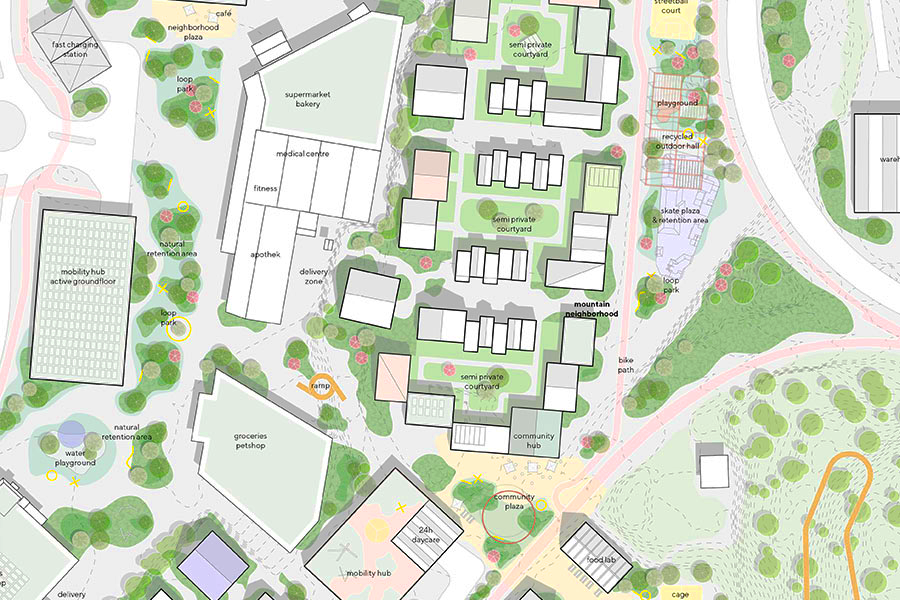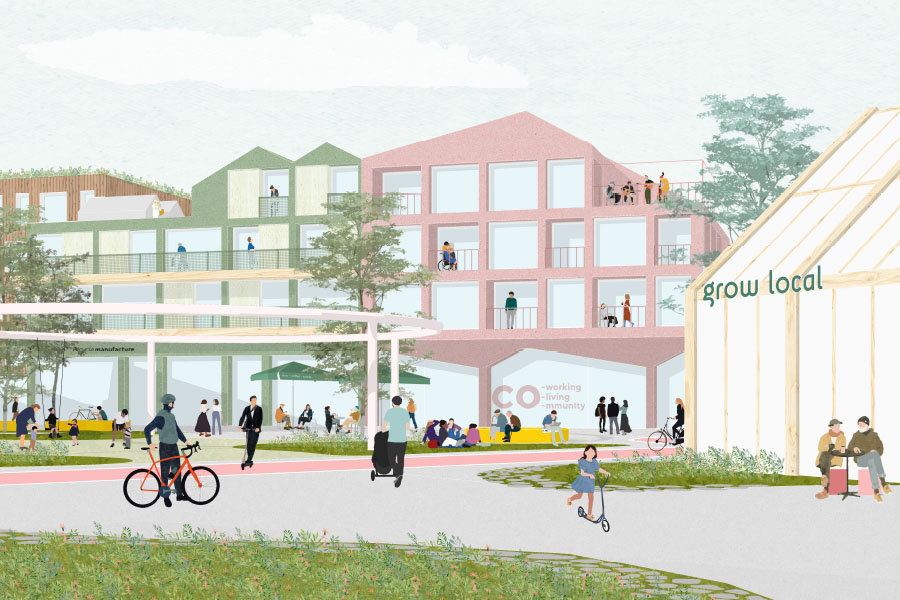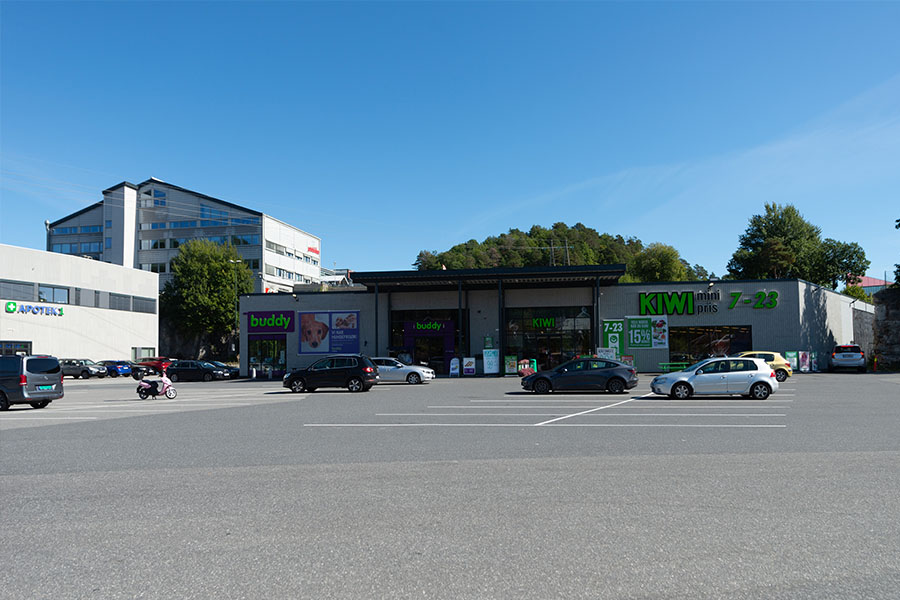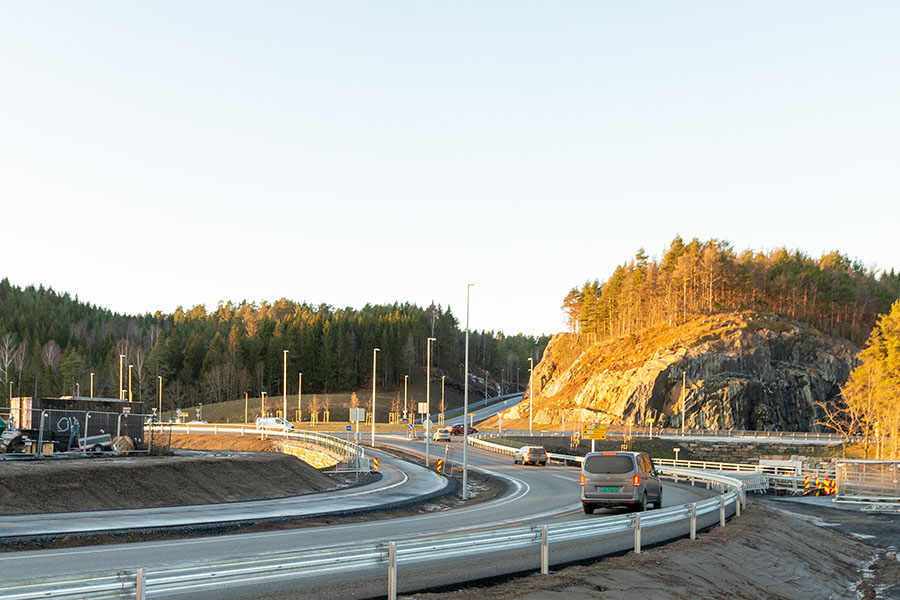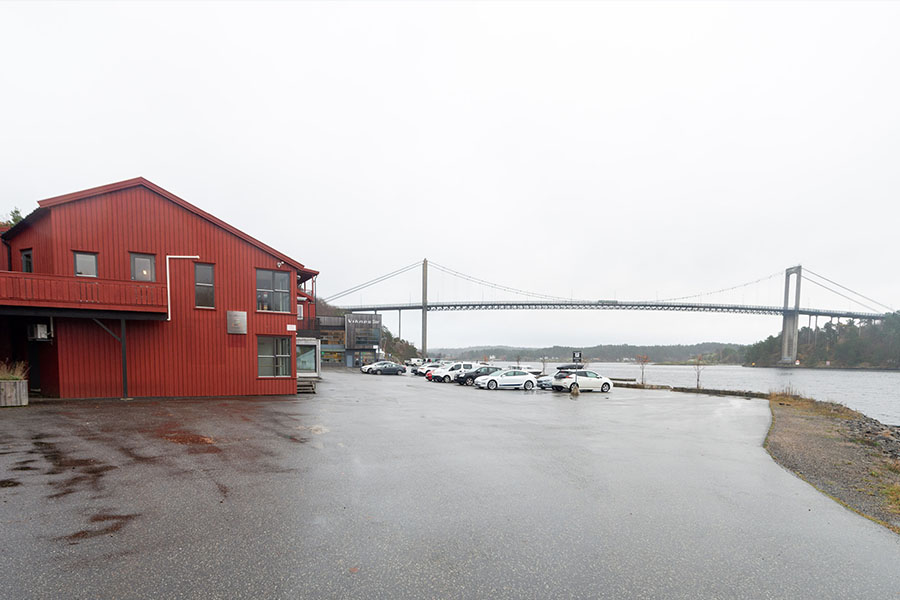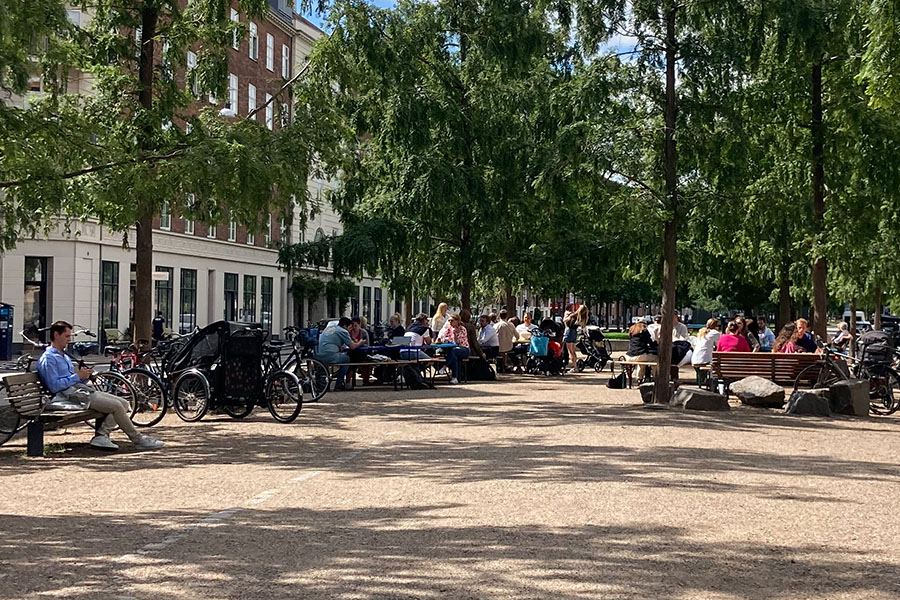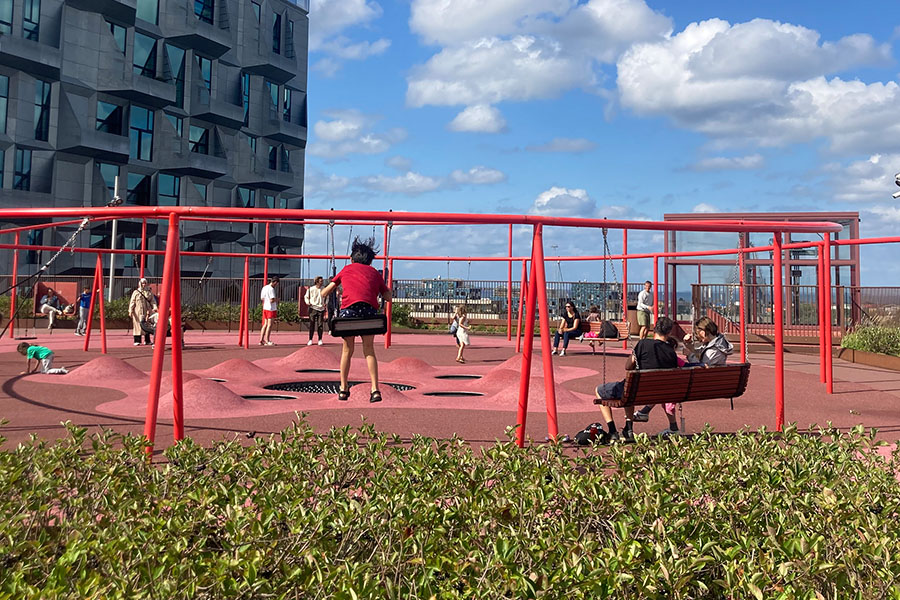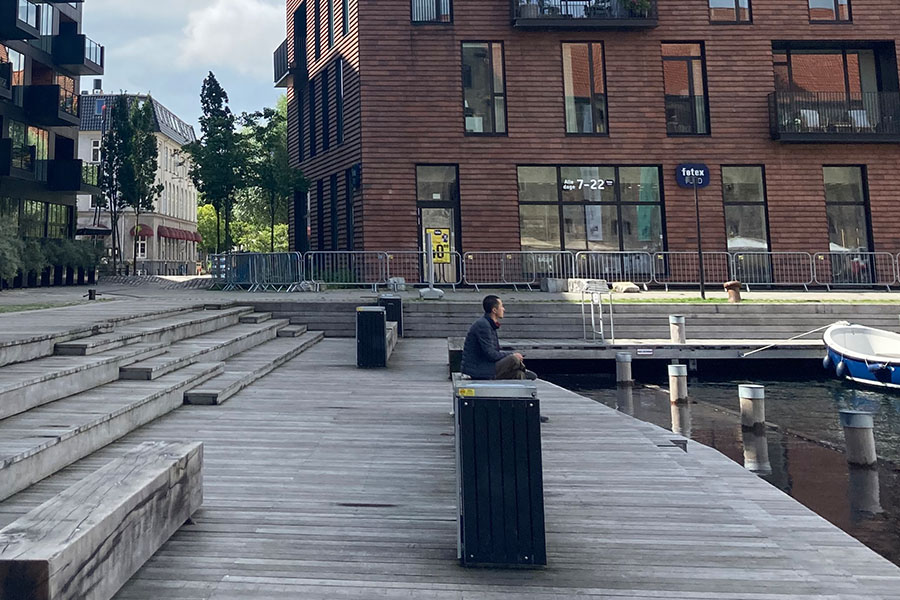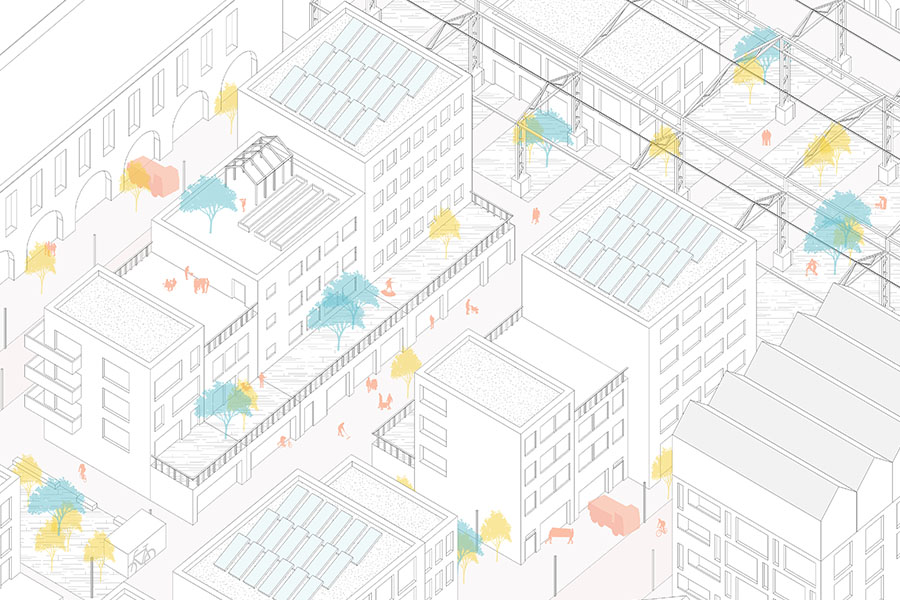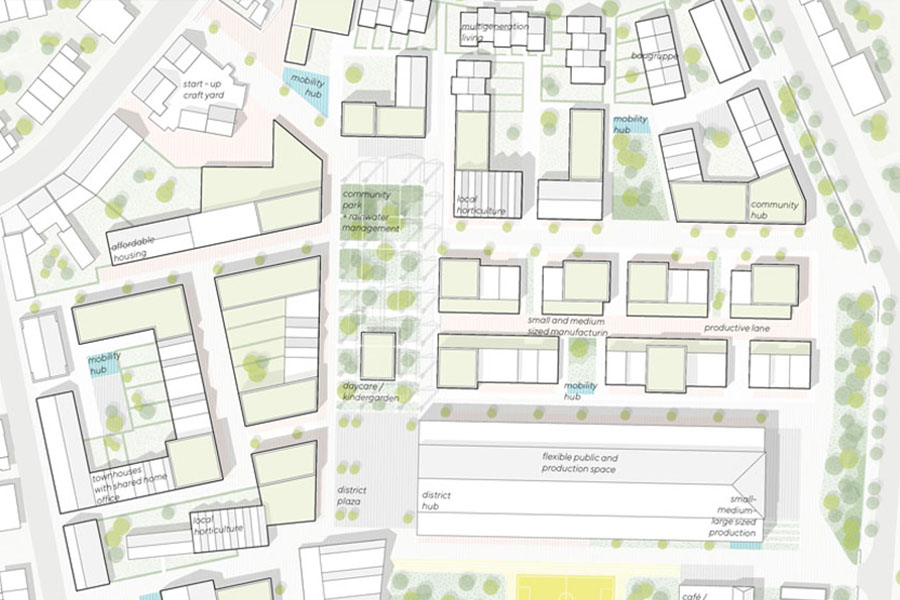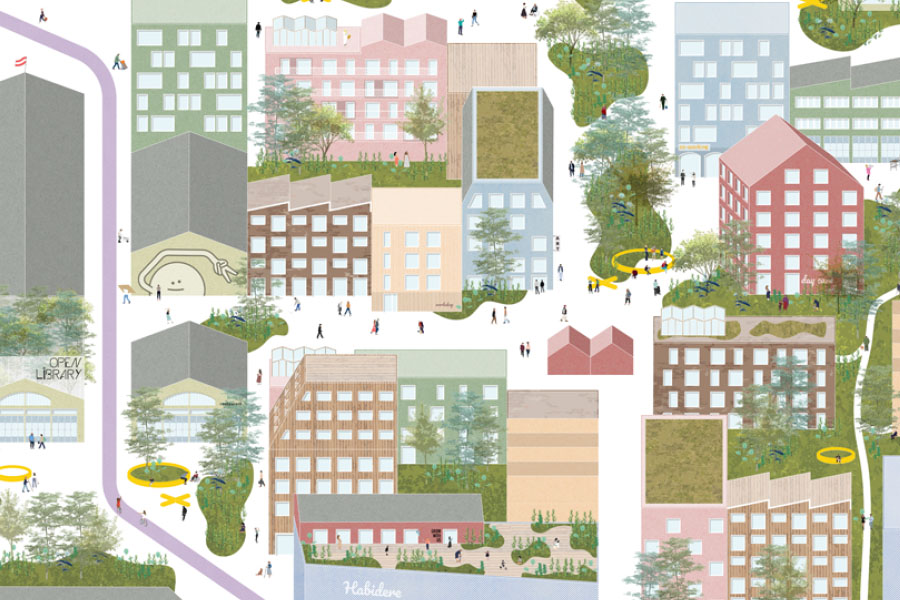co-krøgenes - community is care
Krøgenes (NO) - Mentionné
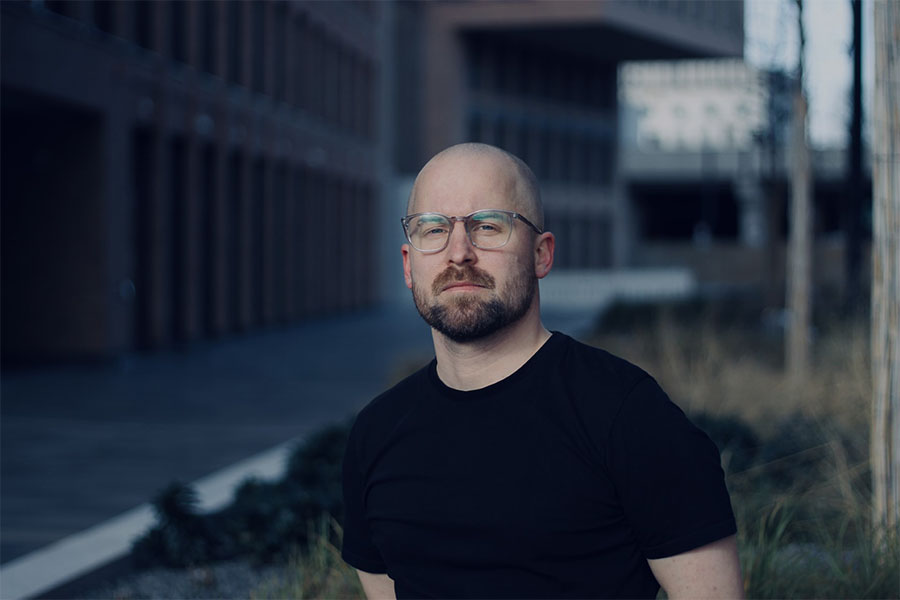
DONNÉES DE L’ÉQUIPE
Associés: Marc Rieser (DE) – urbaniste
info@caoscaos.eu
caoscaos.eu
TEAM PORTRAIT
VIDEO (by the team)
INTERVIEW
Click on the images to enlarge
1. How do you define the main issue of your project in relation with the theme “Living Cities Imagining architecture taking care of the milieus”? And in which way do you think your project can contribute to an ecological and/or social evolution?
Krøgenes has been a car-dominated commercial area in the municipality of Arendal. The area, which today consists mainly of large retail stores, warehouses, parking lots and industry, is located in the middle of several existing and planned developments. Krøgenes is in a time of change and thus offers huge potential for a sustainable transformation. The project 'Co-Krøgenes' lays the foundation for this transformation. In addition to the holistic approach of a learning framework, the concept also offers an adaptable process for implementation. By collaboratively developing the planning and considering the needs of the actual users, this soft implementation allows people to identify with the site and take care of their environment. At the same time, the ecological and climatic concerns as well as those of the non-human residents are included in the planning from the beginning.
2. How did the issues of your design and the questions raised by the site mutation meet?
The Krøgenes site is already a lively area. However, this liveliness has so far been limited to consumption and work. In the future, this area is to be transformed into a mixed district that offers needed housing, public spaces and social infrastructure. The approach of focusing on a caring community naturally requires the people and structures that will one day be part of this community. It is therefore important to involve the people and structures that are already there in the planning from the start and also to include the people and structures that will join them on day in the future. Through this co-design, from the learning framework to the individual implementations, the actual needs are developed together so that the new district can grow sustainably and all users can identify with it.
PROJECT:



The significance of such transformation areas is becoming increasingly important due to the limited resources and ecological aspects. At the same time, these existing areas always bring with them very individual problems, but especially potential. It is important to find the right framework for each location and to scale the measures in line with actual demands. A comparable project that caos caos worked on in the context of Europan 15 was the transformation of a former industrial site into an urban and productive part of the city.
SITE:



Krøgenes is a very large area that cannot be transformed just in a single, hasty move. This transformation requires a gentle and inclusive process. It is precisely this process that caos caos have been working on from the very beginning in the creation of the concept 'Co-Krøgenes'. The transformation of Krøgenes will be a living lab. This does not intend a fixed plan, but an adaptive development of the areas. In this process, planned implementations can be adapted, changed, tested and evaluated, and new typologies can be experimentally explored. Instead of a classical plan in the top-down principle, the overall development can thus be optimally co-designed by the owners, developers and, of course, the actual users. This ensures a sustainable approach that adapts to the needs of the people and users. At the same time, this ensures a stronger identification with the area and people care more about their surroundings. The next steps will be to create the basis for this living lab, include all those involved and then start the transformation with the first quick wins.
REFERENCES:



caos caos is a young studio that develops solutions for a livable and sustainable future through its holistic approach. Our planning should not be understood as a rigid or finished product, but rather as a resilient and flexible impulse that can respond individually to changing needs of people, climate and the environment. Our designs create a structure that enables communities to develop naturally, dynamically and vibrantly within it. All these diverse impacts and changes give rise to an organically grown chaos. We embrace this chaos as an ecosystem that needs to be understood.
6. How could this prize help you in your professional career?
caos caos is very delighted to been awarded for our proposal 'Co-Krøgenes' in the Europan 17 competition and we hope that it will serve as the foundation for further successful cooperation with the city of Arendal and the private owners. The awarded design stands for a flexible and resilient structure, which is exactly what we now want to further develop together with all parties involved and thus co-design the future of Krøgenes. Next to our proposal 'Co-Krøgenes' we want to work on new projects in the future where we can shape and implement our vision of liveable and ecological urban developments together with and for the people and the environment.
TEAM IDENTITY
Legal status:
Team name:
Average age of the associates: 33 years old
Has your team, together or separately, already conceived or implemented some projects and/or won any competition? if so, which ones?
Europan 15 – Winner - Bergische Kooperation (DE) ´´the productive region´´
Europan 16 – Klagenfurt am Wörthersee (AT) ´´life-sized``
WORKS:



